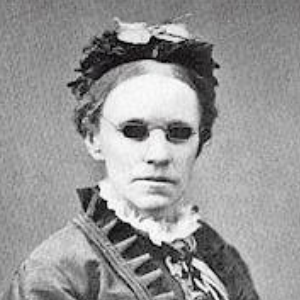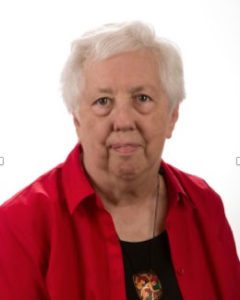
Fanny Crosby, Gospel Hymn Writer
The gospel song had its roots in the camp meeting songs of the 18th and 19th centuries, the songs of the Sunday School movement, the Negro spirituals, the songs of the YMCA, and the songs of the various social movements of the last half of the 19th century. It was during the time after the Civil War that the gospel hymn became an important means of evangelism. The hymns were used by famous evangelists of the time who each had musicians who led the singing, sang solos, oftentimes composed or wrote hymns and arranged for the music of the evangelistic campaigns.
The writers of the gospel hymns were primarily women and clergymen. Women were forbidden to speak in mixed meetings and were not allowed to pray aloud, much less preach, in church. But they took advantage of the acceptable means of expressing their faith, through poetry. Most of their poems were used in their own private devotions or those of their family and friends. Some women’s poems were published anonymously in newspapers, religious magazines, or tracts. They were then picked up by tune writers and eventually found their way into gospel hymnbooks, often without the knowledge of the writer. Some women had direct access to the tune writers or publishi8ng companies and were thus able to have their hymns published. The copyrights were owned by the writers of the music, who in most cases were men.
Fanny Crosby (1820-1915) is the best known of the female writers of gospel hymns. She was blind from infancy; studied and taught at the New York School for the Blind; memorized a great deal of scripture; and wrote over 8500 hymns. The range of topics covered in hymns include: prayer, praise, invitation, assurance, faith, mission, the social gospel, and eternal life. All of her hymns cannot be classified as gospel hymns, but many of her poems were picked up by the musical evangelists and the hymn publishers and used in revival and holiness services. For over forty Fanny Crosby wrote for Bigelow & Main Company (now Hope Publishing Company), oftentimes writing three hymns per week. She received at most $2 for each hymn. This was the only compensation she received from a hymn, for the copyright was owned either by the publisher or the tune writer.
Here are a few examples of her hymns by topic:
Prayer: “Be Silent” “’Tis the Blessed Hour of Prayer”
Praise: “To God Be the Glory”
Invitation: “Jesus Is Tenderly Calling Thee Home”
Assurance: “Blessed Assurance”
Faith: “Pass Me Not” “Jesus Keep Me Near the Cross”
Mission: “Rescue the Perishing”
Social Gospel: “To the Work”
Eternal Life: “Saved by Grace”
Hymn writing became viewed as “a sacred activity,” a way of being an instrument of God. As hymn singing increased in popularity and hymns were seen as a means of sharing the faith of the writer, the contribution of women writers became acceptable and was even given authority as being from God.
Fanny Crosby’s hymns are still in our hymnals. Read and sing them. Use them as a resource for your spiritual journey.
Note: Excerpted from “Sing the Wondrous Love of Jesus: Women Hymn Writers and Their Songs” by Joyce D. Sohl
Joyce D. Sohl, Laywoman-in-Residence
 Joyce D. Sohl has been Laywoman-in-Residence since 2009 as a full-time volunteer. She retired as CEO of United Methodist Women in 2004. She is the author of 4 books, a teacher, retreat leader, writer and non-professional musician. Here at the Center her work is in the area of Spirituality & the Arts with such programs as Tuesdays in the Chapel, Vespers & All That Jazz, Poet’s Corner, quarterly retreats, and art exhibits.
Joyce D. Sohl has been Laywoman-in-Residence since 2009 as a full-time volunteer. She retired as CEO of United Methodist Women in 2004. She is the author of 4 books, a teacher, retreat leader, writer and non-professional musician. Here at the Center her work is in the area of Spirituality & the Arts with such programs as Tuesdays in the Chapel, Vespers & All That Jazz, Poet’s Corner, quarterly retreats, and art exhibits.
